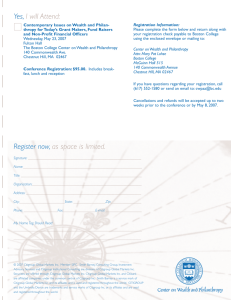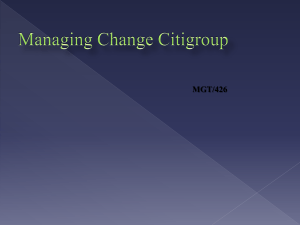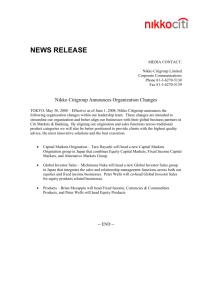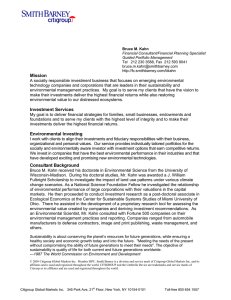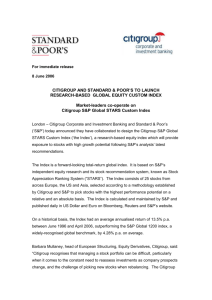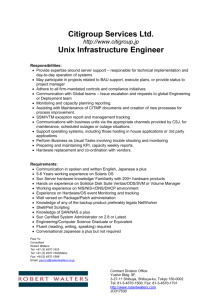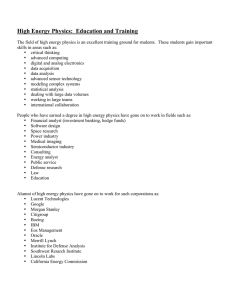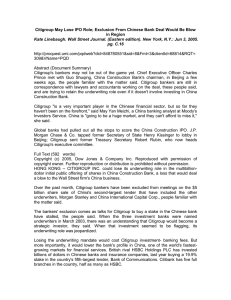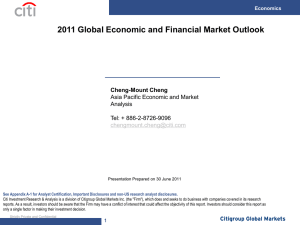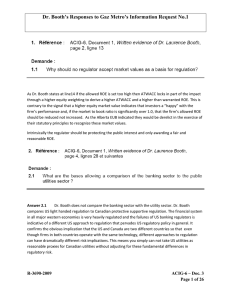Finally, System-Risk Insurance The Financial Times
advertisement
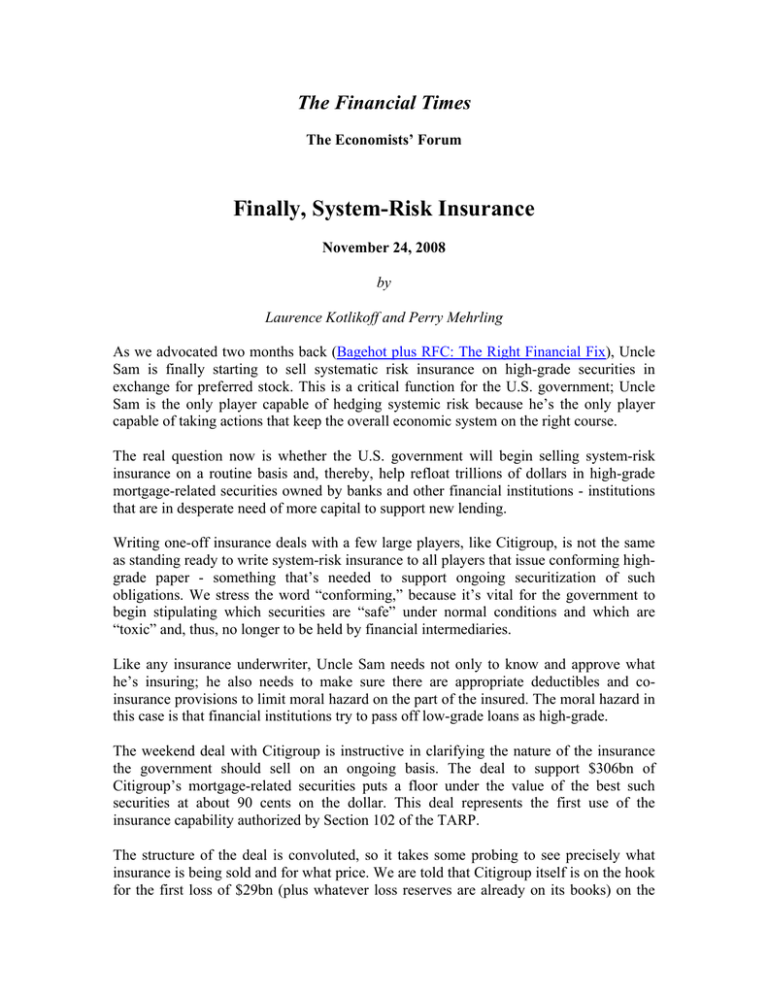
The Financial Times The Economists’ Forum Finally, System-Risk Insurance November 24, 2008 by Laurence Kotlikoff and Perry Mehrling As we advocated two months back (Bagehot plus RFC: The Right Financial Fix), Uncle Sam is finally starting to sell systematic risk insurance on high-grade securities in exchange for preferred stock. This is a critical function for the U.S. government; Uncle Sam is the only player capable of hedging systemic risk because he’s the only player capable of taking actions that keep the overall economic system on the right course. The real question now is whether the U.S. government will begin selling system-risk insurance on a routine basis and, thereby, help refloat trillions of dollars in high-grade mortgage-related securities owned by banks and other financial institutions - institutions that are in desperate need of more capital to support new lending. Writing one-off insurance deals with a few large players, like Citigroup, is not the same as standing ready to write system-risk insurance to all players that issue conforming highgrade paper - something that’s needed to support ongoing securitization of such obligations. We stress the word “conforming,” because it’s vital for the government to begin stipulating which securities are “safe” under normal conditions and which are “toxic” and, thus, no longer to be held by financial intermediaries. Like any insurance underwriter, Uncle Sam needs not only to know and approve what he’s insuring; he also needs to make sure there are appropriate deductibles and coinsurance provisions to limit moral hazard on the part of the insured. The moral hazard in this case is that financial institutions try to pass off low-grade loans as high-grade. The weekend deal with Citigroup is instructive in clarifying the nature of the insurance the government should sell on an ongoing basis. The deal to support $306bn of Citigroup’s mortgage-related securities puts a floor under the value of the best such securities at about 90 cents on the dollar. This deal represents the first use of the insurance capability authorized by Section 102 of the TARP. The structure of the deal is convoluted, so it takes some probing to see precisely what insurance is being sold and for what price. We are told that Citigroup itself is on the hook for the first loss of $29bn (plus whatever loss reserves are already on its books) on the cash flows due on the $306bn in mortgages. This amounts to roughly a 10 percent deductible. Any losses beyond $29bn will be shared by the government (90 per cent) and Citigroup (10 per cent). This is the co-insurance (co-pay) element. This insurance runs for the next 10 years, and Citigroup is paying a one-time $7bn premium for it, using preferred stock. Our article with Alistair Milne (Recapitalizing the Banks is Not Enough) advocated deductibles, but not co-pays. But co-pays seem a good idea. As predicted, the insurance deal with Citigroup has refloated its assets, with its stock rising by 53 per cent immediately after the deal’s announcement. Citigroup will now be able to use its newly insured assets as collateral for borrowing in the repo and commercial paper markets. Indeed, the agreement permits Citigroup to use the $306bn of assets as collateral in borrowing from the Fed at the overnight index swap (OIS) rate plus 300 bp — the rate currently being charged for asset-backed commercial paper at the Fed’s Commercial Paper Funding Facility. This ensures the full liquidity of these assets. At the moment, it is only these specific assets on the balance sheet of one specific institution that are affected, but the structure of the deal could easily be applied to a similar class of assets on any balance sheet. The effect would be to backstop the value of this entire class of existing assets, and so restart secondary markets in these existing assets. A similar insurance structure could be used to support the valuation of newly issued paper of the same class, thus restarting new-issue markets which are the world’s main source of credit in our new financial order. The Citigroup deal is not the first instance of Uncle Sam’s sale of system-risk default insurance. The model for the 90/10 risk-sharing was first floated in the Money Market Investor Funding Facility. Under that plan, MMMFs sell high grade money market assets to a special purpose vehicle, but remain on the hook for the first 10 per cent of losses; the Federal Reserve covers the remaining 90 per cent. Under the Citigroup deal, this same 90/10 risk sharing is applied to losses on high-grade capital market assets beyond the initial 10 percent deductible. The Treasury is on the hook for the next $5bn, the FDIC for the next 10, and the Fed takes everything after that. This convoluted structure reflects provisions in the TARP bill, which charges, against Paulson’s $700bn kitty, the entire face value of any insurance policies sold by the Treasury. If the Treasury, instead of the Federal Reserve, had insured the entire $306bn, it would have had to charge $306bn against the remaining TARP funds. As it is, the Treasury only has to charge $5bn, and it gets $4bn in premium payments for that. The FDIC gets $3bn for its coverage of the next $10bn. The Fed’s involvement comes from its commitment to fund the remaining pool of assets with a non-recourse loan subject to the same 90/10 risk sharing arrangement. Given Citigroup’s heavy involvement with mortgage securities, most notably through the ill-fated Structured Investment Vehicles (SIVs), it makes sense to start with Citigroup. But the plan will work to restart capital markets only if it is extended beyond Citigroup. Furthermore, the insurance structure needs to be made clearer if the markets are to understand its consequences for the valuation of the underlying securities. The government needs to be in the business of selling credit insurance explicitly, not through the back door. The government should be offering insurance on the highest quality assets regardless of who happens to be holding them. The point should be to support markets, not institutions. In this regard, it’s critical to realize that Uncle Sam is not insuring Citigroup per se. Instead, it’s insuring a particular, $306bn-face value, collection of high-grade mortgagerelated securities - securities that Citigroup can now sell to third parties or use as collateral to borrow money from third parties. Laurence Kotlikoff is a professor of economics at Boston University. Perry Mehrling is a professor of economics at Barnard College, Columbia University
